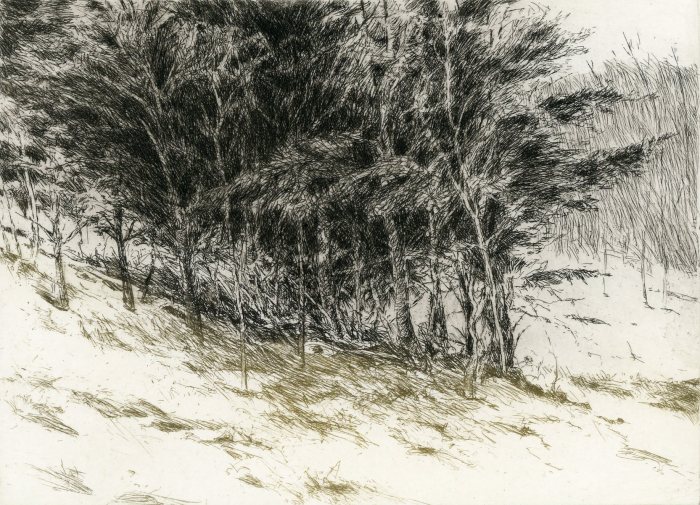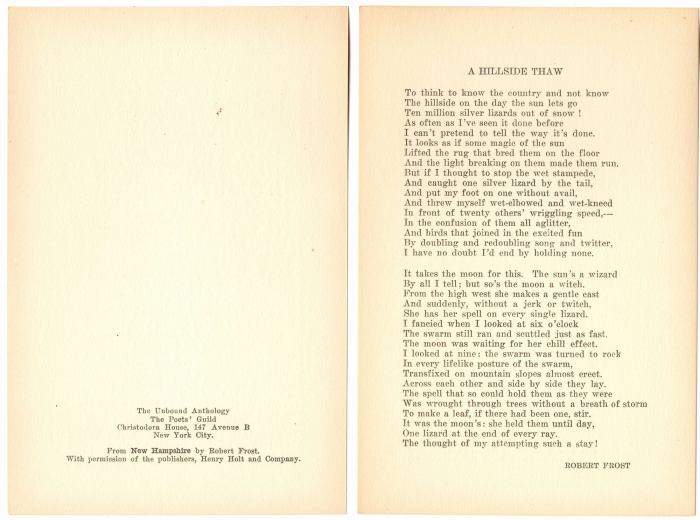A hillside thaw iready answers are the key to unlocking the mysteries of this natural phenomenon. From its definition to its consequences, this guide delves into the fascinating world of hillside thaws, providing a comprehensive understanding of their causes, effects, and management strategies.
As temperatures rise and snowpack melts, a hillside thaw signals the transition from winter’s icy grip to spring’s awakening. This dynamic process, influenced by a multitude of factors, can have both positive and negative impacts on the environment, making it an intriguing subject for exploration.
Hillside Thaw Definition: A Hillside Thaw Iready Answers

A hillside thaw refers to the natural phenomenon where snow and ice accumulated on a hillside begin to melt and flow downslope. This process is primarily driven by the combined effects of rising temperatures and increased solar radiation, particularly during the transition from winter to spring.
Natural Processes Involved
The hillside thaw involves several key natural processes:
- Snowmelt:As temperatures rise above freezing, snow begins to melt and transform into liquid water. This process is accelerated by direct sunlight and warmer air temperatures.
- Infiltration:A portion of the melted snow infiltrates the soil, replenishing groundwater reserves and contributing to soil moisture levels.
- Runoff:The remaining melted snow and water that exceeds the soil’s infiltration capacity flows downslope as runoff. This runoff can create streams and rivulets, which may eventually converge into larger bodies of water.
Factors Influencing Hillside Thaw
Hillside thaw is influenced by a combination of environmental factors that affect the melting of snow and ice on hillsides. These factors include temperature, precipitation, snowpack, and soil conditions.
Temperature
Temperature plays a critical role in triggering a hillside thaw. When temperatures rise above freezing, the snow and ice on hillsides begin to melt. The rate of melting increases as temperatures continue to rise.
Precipitation
Precipitation, in the form of rain or snow, can affect the timing and extent of a hillside thaw. Heavy rainfall can accelerate the melting process by adding water to the snowpack and increasing the water content of the soil. Conversely, snowfall can slow down the thaw process by adding to the snowpack and insulating the ground.
Snowpack
The characteristics of the snowpack, such as its depth, density, and temperature, can influence the timing and extent of a hillside thaw. A deep snowpack will take longer to melt than a shallow snowpack. Similarly, a dense snowpack will melt more slowly than a less dense snowpack.
The temperature of the snowpack also affects the rate of melting. A warm snowpack will melt more quickly than a cold snowpack.
Soil Conditions, A hillside thaw iready answers
The conditions of the soil on hillsides can also affect the timing and extent of a hillside thaw. Well-drained soils will allow water to percolate through, which can help to accelerate the melting process. Conversely, poorly drained soils will retain water, which can slow down the thaw process.
The slope of the hillside can also affect the rate of melting. Steep slopes will allow water to drain away more quickly, which can accelerate the thaw process.
Consequences of Hillside Thaw

Hillside thaws have significant environmental impacts, both positive and negative. Understanding these consequences is crucial for developing effective land management strategies.Hillside thaws can positively impact the environment by releasing nutrients into the soil. As the snow melts, it carries organic matter and nutrients that have accumulated over the winter.
This nutrient-rich water can enhance soil fertility and support plant growth. Additionally, thaws can replenish water sources, such as rivers and lakes, which can benefit aquatic ecosystems.However, hillside thaws can also have negative environmental consequences. The rapid release of water during a thaw can lead to soil erosion.
In the hillside thaw iready answers, we explore the changing landscape as winter’s grip loosens. Similarly, the mothers of mayhem society svg depicts a dynamic and transformative group. Just as the hillside awakens with new life in spring, this group embraces change and challenges societal norms, fostering a sense of community and empowerment.
The water can carry away topsoil, which is essential for plant growth and soil stability. This erosion can result in nutrient loss, reduced soil fertility, and increased sediment deposition in water bodies.Hillside thaws can also affect vegetation. The rapid melting of snow can expose plants to sudden changes in temperature and moisture levels, which can cause stress or damage.
In some cases, thaws can also lead to flooding, which can damage or destroy vegetation.
Water Quality
Hillside thaws can impact water quality by introducing pollutants into water bodies. As the snow melts, it can carry contaminants, such as road salt, pesticides, and fertilizers, into rivers and lakes. These pollutants can harm aquatic life and degrade water quality.
Soil Erosion
Hillside thaws can cause soil erosion due to the rapid release of water. The water can carry away topsoil, which is essential for plant growth and soil stability. This erosion can result in nutrient loss, reduced soil fertility, and increased sediment deposition in water bodies.
Vegetation
Hillside thaws can affect vegetation by exposing plants to sudden changes in temperature and moisture levels. This can cause stress or damage to plants. In some cases, thaws can also lead to flooding, which can damage or destroy vegetation.
Predicting Hillside Thaw

Predicting the timing and extent of hillside thaws is crucial for safety and planning. Weather models and historical data play a vital role in forecasting these events.
Weather models incorporate real-time weather data and atmospheric conditions to simulate future weather patterns. These models can provide valuable insights into the timing and intensity of thaws. They can also predict the elevation range and areas most likely to be affected.
Historical Data
Historical data on hillside thaws is essential for forecasting. By analyzing past events, scientists can identify patterns and trends in thaw timing, duration, and extent. This information can be used to develop predictive models and improve the accuracy of forecasts.
Managing Hillside Thaw

Managing the effects of hillside thaws is crucial to minimize their potential impacts. Various techniques can be employed, including:
- Vegetation Management:Planting deep-rooted vegetation on hillsides helps stabilize the soil and prevent erosion. Trees and shrubs with extensive root systems anchor the soil, reducing the risk of landslides and debris flows.
- Erosion Control Measures:Installing erosion control structures, such as retaining walls, gabions, and riprap, helps reinforce hillsides and prevent soil loss. These structures act as barriers against water flow, reducing the erosive force of runoff and stabilizing slopes.
- Water Management Strategies:Implementing proper drainage systems, such as culverts, ditches, and swales, helps manage water flow and reduce soil saturation. By diverting water away from vulnerable areas, these systems minimize the risk of erosion and landslides.
Question & Answer Hub
What is a hillside thaw?
A hillside thaw is the process of snowmelt and runoff on hillsides, occurring when temperatures rise and snowpack begins to melt.
What factors influence the timing and extent of a hillside thaw?
Temperature, precipitation, snowpack, and soil conditions all play a role in determining the timing and extent of a hillside thaw.
What are the positive and negative impacts of hillside thaws?
Hillside thaws can positively impact water availability, soil moisture, and vegetation growth. However, they can also lead to soil erosion, flooding, and water quality issues.
How can hillside thaws be predicted?
Weather models and historical data can be used to predict the timing and extent of hillside thaws.
What techniques can be used to manage the effects of hillside thaws?
Vegetation, erosion control measures, and water management strategies can be used to mitigate the impacts of hillside thaws.